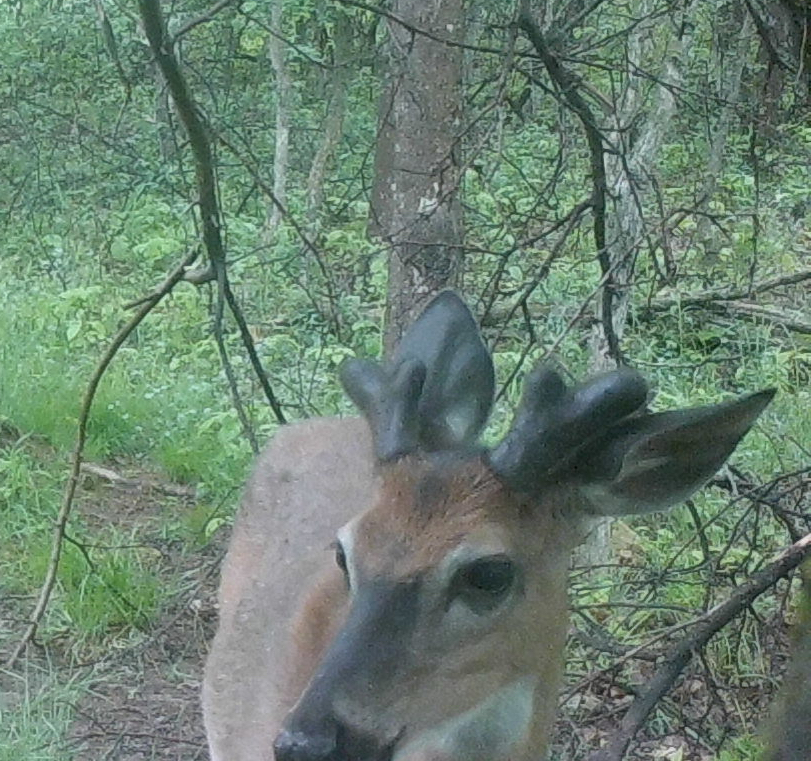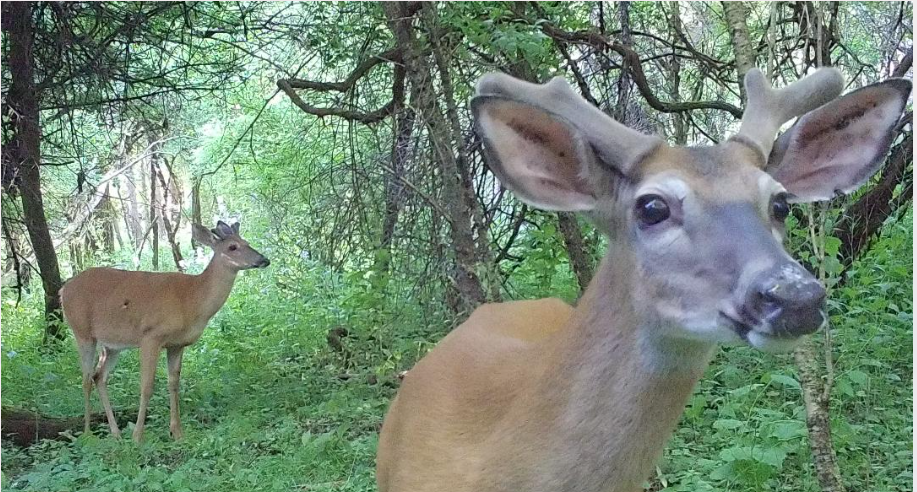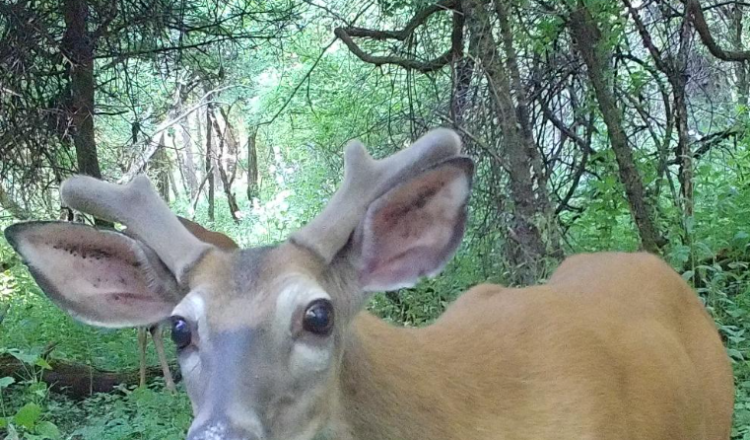“Antler velvet not only feeds a deer’s soft growing, pre-calcified antlers, but is also used as a worldwide nutraceutical”
By Oak Duke,
Spring turning into summer around the solstice is the time of growth.
Mostly, we think of plants shooting up (especially grass in our lawns,) flowers, vegetables… and the repopulation of critters, whether birds or four-legged animals.
It’s also the time of growth of those iconic whitetail antlers.
Antlers start in a very inauspicious way in May as subtle blackish bumps on a buck’s head.
But amazingly, for a warm-blooded animal, they begin to rise from a deer’s head almost overnight.
White-tailed bucks differ in growth rate as each set of antlers is unique.
Some bucks grow antlers at an amazing ¼-inch per day. Maybe that doesn’t sound like much, but on a older animal that could be a 10-pointer in September, that’s ¼ inch per tine, or 7.5 inches per month.
Their cousins, elk, sprout antlers at up to an inch per day while moose can add a pound per day!
Two whitetail bucks, even the same age, that appear in every respect as twins, will grow very different sets of antlers.
How do they do it?
Antlers are unique.
They are not horns.
Horns on sheep, cows, antelope, goats stay on the ram’s or bull’s head.
Whereas antlers drop off or are shed every year and are regrown.
Age, nutrition, availability of minerals, and DNA all are important factors in antler growth.
Researchers have been studying this annual genesis of antlers hoping to learn more about bone disease and even insights into replacement therapy.
Antlers start out growing on a deer’s head from a specialized series of cells in a circle called the pedicle. Antlers grow from the skull and are bone; in a way fed by a stretchy membrane of skin-like substance we call “velvet” because of its feel and texture.

Antler velvet not only feeds a deer’s soft growing, pre-calcified antlers, but is also used as a worldwide nutraceutical, ingested in pill form as a panacea for many of the ills of mankind.
I remember being amazed on a visit years ago to a Chinese herbal shop in Toronto and seeing a large set of whitetail antlers, (about a 140-class 8-pointer) in the display case.
After having a longish talk with the owner about ginseng, I switched gears and asked him about the antlers…? Since I was in the middle of Chinatown there in Toronto (Dundas Street) and didn’t think he was a deer hunter…
I had to.
“Why the big set of antlers in that case?”
He smiled and brought out a couple finely crafted boxes containing dried and sliced velvet deer antler, explaining that the little wafers of bone are very good medicine, especially for men, improving immunity, bone strength, and size of muscles.
His culture has been using velvet deer antler for thousands of years as a remedy for all sorts of ills.
IGF-1 is one of a number of growth factors (anabolic growth hormones) in velvet deer antler and is one of the substances said to increase an athlete’s endurance, strength, and performance.
However, the World Anti-Doping agency (WADA) advises against the use of velvet deer antler because it does prohibit IGF-1 and those using deer antler pills could be surprised with a positive blood test result, competing at the Olympic level or in professional sports.
Baltimore linebacker Ray Lewis was embroiled in a deer antler velvet controversy in 2013.
Deer farming and harvesting of velvet antlers is worldwide, fueling a very large market for velvet antler pills and spray, easily accessed through any web search.
Two types of bone have been identified by researchers in a growing antler. One, an inner, relatively softer bone and also a harder outside bone for rigidity and strength.
This combination of bones is covered by a double-layered skin, with the outside that we see, the dark velvet comprised of short hairs growing from follicles on an expandable skin, and that covering a thicker hide-like layer that changes as the deer antlers mature and harden.
Here in the northern latitudes deer shed their velvet beginning usually in early September.
The process of velvet shedding happens quickly, often in a day or so. And by mid-September, 99% of bucks are ‘hard-horn,’ sporting shiny white, sharp racks.
That’s when the outer velvet covering dries out, hardens and then peels and is often rubbed off on saplings by the buck.
Bucks in velvet in early summer are very reclusive and exceedingly careful about damaging their relatively soft and delicate antlers.
In such a vulnerable state it’s no time for a buck to be crashing and running through the woods, not only risking permanent damage to the antler beams and tines, but also, velvet antlers are enervated, blood-filled, and sensitive.
Bucks will not lock horns, even for light sparring contests when in velvet.
But as soon as the velvet comes off around Labor Day here, the gloves are off and buck battles, mostly pushing and shoving matches, are ubiquitous. And then it’s not uncommon to hear bucks clack their antlers together.

During this time of velvet antler growth in the summer, whitetail bucks hang out in bachelor groups, having nothing to do with females and their newly born fawns.
The male pecking order, or hierarchical structure in whitetails, from the top dog, on down to the last in line is instead, reinforced through hoof kicks, protecting at all costs, the soft antler growth.
In a few months, that will change.

Oak Duke/Wellsville, NY/ June 2024
Facebook pages:
Whitetail Page: www.facebook.com/Oak.Duke.whitetail.page
Duke’s Honey: www.facebook.com/Dukes-Honey-513590015445371/







